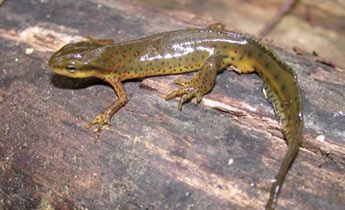On a recent FLM&A Adventure Team visit to Cayuga Lake, I was charmed by a visit to the Ithaca Children’s Garden! In a picturesque setting overlooking the south end of the lake, the Ithaca Children’s Garden is “an award-winning 3-acre public children’s garden designed for kids, enjoyed by all, and driven by a mission to inspire the next generation of environmental stewards” (ithacachildrensgarden.org). It can be found at 121 Turtle Lane at the end of Cass Park on Rt 89.

As an environmental educator (and admittedly, a big kid), I understand the importance of free play and interaction with the natural world as part of a child’s development, but I would not be able to say it as eloquently as it is stated in this article by Katherine Sommerville of the American Horticultural Society (ahsgardening.org):
“For kids, play is serious business. It’s not ‘just about having fun, but taking risks, experimenting, and testing boundaries,’ states the American Academy of Pediatrics in a clinical report called The Power of Play, published in August 2018. The report also asserts that play yields all sorts of benefits in relation to brain development, learning, and stress reduction. When a garden is designed to encourage play, something truly magical happens, like it does every day at the Ithaca Children’s Garden (ICG) in upstate New York. Here, young visitors find limitless opportunities to engage in interactive explorations of the natural world. ‘ICG provides a safe place for children to connect to abundant and diverse life forms right in the city,’ says Erin Marteal, its executive director. ‘ICG is about wonder and curiosity, and slowing down in a time when all the visual chatter and data can overwhelm and dull our senses. It’s about connecting with what’s real, here, and now, and educating the senses of the whole person, beyond what any screen can provide,’ she adds. What makes ICG and gardens like it unique is the way in which they go about encouraging these outcomes. ‘While most children’s gardens invite a level of engagement,’ explains Marteal, ‘they are typically highly curated and controlled.’ In contrast, every space within ICG is designed to connect with children’s developmental needs and interests in open-ended ways. Learning happens here, but, unlike in a heavily structured learning environment, it happens more organically, on each individual child’s terms. ‘It is much more memorable for a child to pick weeds to feed to the chickens, smell freshly picked mint, and climb trees to experience what the bark feels like than it is to read a sign,’ says Marteal. And this is where ICG’s mission of cultivating environmental stewardship comes into play. When children have fun and memorable outdoor experiences, they are more likely to become adults who will prioritize nature and the environment.”
While exploring the grounds, I climbed on the giant turtle, wandered through the memorial labyrinth, made “music” on the cowbells, and marveled at the still abundant kitchen garden. But perhaps the most intriguing section of the garden is called The Anarchy Zone!

Here, children are free to climb on stumps and tires, play in the mud, dig for worms, build forts out of straw bales, swing from tree branches, and generally do all of those things that cause adults to call out, “Be careful!” Helicopter parents beware: if you take your child here, he/she will get muddy, wet and dirty! But also, prepare yourselves for wide grins, of which I saw many while exploring there! The mission is written on tiles at the entrance kiosk, as shown in this photo.

The tiles say: “The mission of the Hands-on-Nature Anarchy Zone is to engage children and the community in the natural world through outdoor sensory play. This is a place where children of all ages and abilities are free to play, explore, construct, and create, using a variety of loose parts. LET THE CHILDREN PLAY! Research shows that children’s growth, development, and overall well-being is enhanced through access to nature and opportunities for free play. Playing outside makes kids happier, healthier . . . smarter! Research also shows that the more access we have to the natural world as children the more likely we are to care about it as adults.”

While roaming the grounds, I saw several families relaxing and immersing themselves in this low stress, creativity-inducing, un-programmed environment. What a joy to truly explore with no bounds other than the limits of one’s own imagination! And not a screen in sight. All this for free, dawn to dusk, every day of the year!

Well, this kid sure had a great time!



